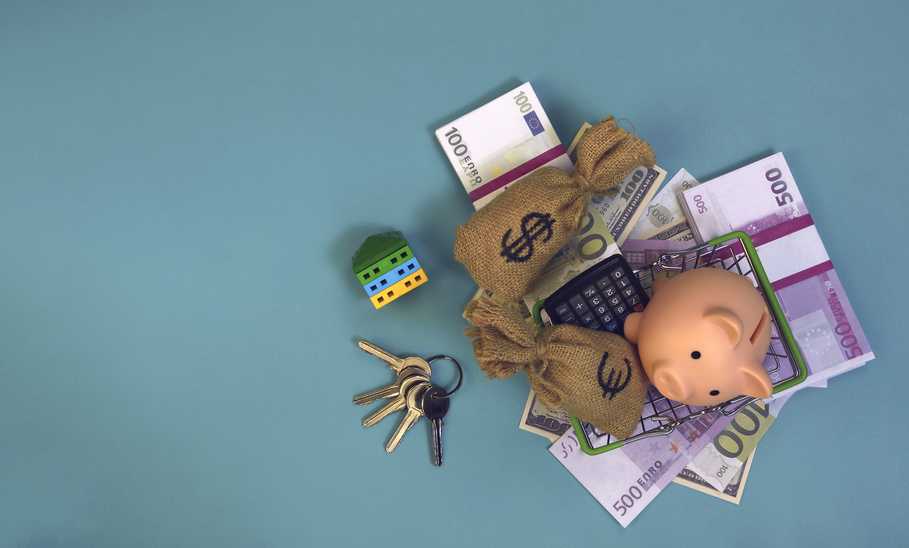How Much Money Do You Need to Buy a House?

Our evaluations and opinions are not influenced by our advertising relationships, but we may earn a commission from our partners’ links. This content is created by TIME Stamped, under TIME’s direction and produced in accordance with TIME’s editorial guidelines and overseen by TIME’s editorial staff. Learn more about it.
As the average home price continues to increase, estimating how much you’ll need for your home search can be daunting. It’s essential to consider the upfront and ongoing costs of homeownership. Here’s a rundown of the key costs so you know what to expect and how much money you’ll need to buy a house.
Stubbornly high mortgage rates and elevated home prices have left many would-be buyers on the sidelines. The median price for a single-family home was $422,600 in July 2024, up 4.2% from the previous year, according to theNational Association of Realtors.
Even for buyers not looking for a stand-alone property, the median price for all types of home sales across the U.S.—including single-family homes, townhomes, condos, and co-ops—reached $419,300. That’s the highest price ever recorded and the eleventh month in a row of year-over-year price gains.
These stats differ greatly by region. Here’s what home prices look like across the country:
| Region | Median sales price |
|---|---|
Midwest | $317,100 |
South | $374,300 |
Northeast | $479,200 |
West | $632,900 |
Homes are expensive, especially if you’re in one of the pricier markets in the Northeast or West. Of course, a home’s price tag is just one number to consider. Here are six expenses to also anticipate.
A down payment is the percentage of the home’s purchase price you pay upfront to secure a mortgage. The minimum down payment you’ll need to make depends on the type of mortgage you get:
| Loan type | Minimum down payment |
|---|---|
VA loan | 0% |
USDA loan | 0% |
Conventional loan | 3% |
FHA loan | 3.5% |
Jumbo loan | 10% to 30% |
Traditionally, experts have recommended 20% as a downpayment, although data shows the average is actually closer to 6% for first-time buyers.
Generally, the larger your down payment, the lower your interest rate because you’ll represent less risk to the lender. A larger down payment also reduces your monthly mortgage payment, helps you build equity faster, and saves you money on interest over the life of the loan.
Of course, spending every dollar you have on a down payment can lead to financial trouble, and there are other homebuying expenses to consider. You should also have six months’ worth of living expenses stashed in an emergency fund to cover the unexpected—and show your lender that you can weather a financial setback.
Closing costs are the various fees you pay your lender and other service providers on closing day. They usually run 2% to 5% of the home’s purchase price (not the loan amount), so areas with higher housing costs tend to have the highest closing costs. Typical closing costs for buyers include:
Closing costs vary by lender, so shopping around and comparing offers can be worth the effort.
Prepaid costs (aka “prepaids”) are expenses you pay at closing to cover future housing-related costs before they’re actually due. Standard prepaid costs include:
Your lender deposits the funds into an escrow account. When payments are due, the lender will use funds from the escrow account to cover them. Prepaid costs should be the same from one lender to the next, so you don’t need to consider them when comparing loan offers.
Moving costs are another consideration when budgeting for a new home. According to moving.com, here are the average costs.
| Home size | Local move | 250 miles | 1000 miles | 2500 miles |
|---|---|---|---|---|
Studio/1 bedroom | $501 to $985 | $1,123 to $2,260 | $1,442 to $3,024 | $1,920 to $4,272 |
2-3 bedroom | $966 to $1,733 | $2,272 to $4,343 | $3,145 to $5,958 | $4,236 to $8,546 |
4-5 bedroom | $1,941 to $2,988 | $4,137 to $5,553 | $6,378 to $10,002 | $9,546 to $14,107 |
Remember to factor in other costs, including travel costs, moving supplies (e.g., cardboard boxes, bubble wrap, and packing tape), storage fees, tips, and fees for moving specialty items like a piano, valuable artwork, or hot tub.
The costs we’ve highlighted so far are the ones you’ll pay on (or near) closing day. However, it’s also essential to think about your monthly mortgage payment. After all, that payment might be part of your monthly budget for 30 years. You can use an online mortgage calculator (like this one) to calculate how much you’ll owe each month based on your purchase price, down payment, loan term, and interest rate.
There’s still one more cost to consider: the ongoing costs of homeownership. These include homeowners insurance, property taxes, HOA fees (if applicable), utilities, routine maintenance, and repairs.
A general rule of thumb is to set aside 1% to 4% of your home’s value each year. Newer homes typically have lower average maintenance costs, while older homes are more likely to need repairs. Weather and climate change can also be a factor, so you might want to save more if your home is an area prone to droughts, heavy rainfall, high winds, or frequent freeze/thaw cycles during the winter.
Home affordability is based on several factors, including income, debts, cash reserves, and credit profile.
Your income (or household income with a co-borrower) helps establish the monthly mortgage payment you can afford. As a starting point, you should aim for a home that costs no more than two to two-and-a-half times your gross annual income.
Part of your monthly income goes toward debts and expenses. Lenders evaluate your debt-to-income (DTI) ratio—your total monthly debts divided by your gross monthly income—to determine whether a mortgage payment fits your budget. Generally, your monthly home payments shouldn’t exceed 36% of your gross monthly budget.
The more cash you put down, the less you’ll need to borrow, and the lower the interest rate your lender might offer. A higher down payment means you’ll pay less monthly and in interest over the loan’s life.
Generally, the better your credit, the lower the interest rate you’ll receive. This means a lower monthly mortgage payment, which can increase your homebuying budget. An online home affordability calculator is a simple way to estimate a comfortable mortgage amount based on your financial situation.
Saving for a house can be tricky, especially if you have little wiggle room in your budget. Here are a few tips that can help make saving easier.
Use an online homebuying affordability calculator to determine how much house you can afford within your budget, and then decide how much to save for a down payment and emergency fund.
Take a close look at your spending and find ways to cut your expenses:
Asking for a raise is a regular part of having a job, so don’t be afraid to do so. Consider picking up a side gig or second job to boost your earnings if your schedule allows.
Purchasing a home takes a lot of money, whether buying a starter home, upsizing to accommodate a growing family, or downsizing after the kids leave. Remember, even tiny differences in your interest rate will impact your monthly payment and the amount of interest you pay over the long run. Comparing at least three loan offers from different lenders can help ensure you get the best deal possible.
If the monthly payment seems daunting—or if you’d rather have more wiggle room in your budget—consider buying a cheaper house than the numbers say you can afford. That way, you’ll have more cash to save for retirement or other goals like travel or pursuing a new hobby. You’ll also be better positioned to weather financial setbacks or take advantage of unexpected opportunities. Your future self will thank you.
Determining how much house you can afford depends on your personal circumstances, but as a general rule, you should spend no more than 28% of your gross monthly income on your monthly housing payment, including principal, interest, taxes, and insurance. The 28/36 rule takes it one step further, adding that you should spend no more than 36% of your gross monthly income on your total debts.
The 28/36 rule is a guideline for determining how much house you can afford based on your monthly gross income and debt obligations. According to the rule, you should spend no more than 28% of your gross income on housing costs and no more than 36% of your gross income to meet all your monthly debt obligations.
You’ll need a minimum down payment of 3.5% to qualify for an FHA loan. Say you’re buying a $300,000 home, your down payment would be at least $10,500. You’ll also need to factor in closing costs and other expenses, including lender fees, appraiser fees, and theupfront mortgage insurance premium (MIP) the FHA charges. Closing costs generally range between 3% and 6% of your total loan amount—or $9,000 to $18,000 on a $300,000 loan.
Active duty and veteran service members and qualifying surviving spouses can apply for loans backed by the U.S. Department of Veterans Affairs (VA). These loans don’t have down payment or mortgage insurance requirements, but you’ll be on the hook forclosing costs like a loan origination fee, appraisal fee, title insurance, and a one-time, VA funding fee. Closing costs typically range from 3% to 6% of the total loan amount, though you can roll some closing costs into your loan.
The information presented here is created by TIME Stamped and overseen by TIME editorial staff. To learn more, see our About Us page.



